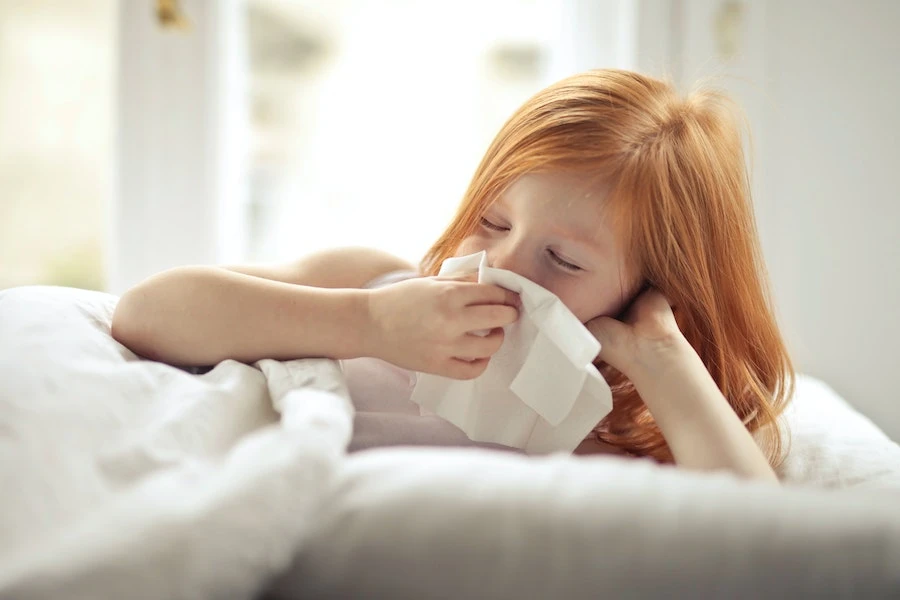
Babies, toddlers, and children are the most vulnerable to illnesses, primarily because they still have immature and underdeveloped immune systems. Moreover, most of the time, kids enjoy playing outside. They also play with anything that interests them, even dirt. That being said, they can be overexposed to their environment and can easily get sick.
As parents, you may be caught in a never-ending cycle of looking after your sick children. Although these illnesses are “common,” many still have difficulty handling similar situations. Knowledge and attention are crucial when considering your children’s health. To learn more, here is a list of common childhood illnesses and how you can treat them.
1. Cough And Colds
One of the most commonly experienced illnesses by children are coughs and colds. Symptoms include blocked or runny nose, sneezing, coughing, and watery eyes. Colds are more common in infants and toddlers. This condition can temporarily cause a rise in body temperature.
When your child has a cough and cold, let them rest first and keep them hydrated with lots of fluid intake like water or juices with low sugar. If your child still doesn’t get better after a few days, bringing them to a doctor would be helpful. Get them tested immediately, so you get the proper cold and flu medications they might need.
2. Bronchitis And Bronchiolitis
Bronchitis and bronchiolitis are both chest infections that affect the lungs’ airways. What differs is that bronchitis affects older children and adults. On the other hand, bronchiolitis usually affects babies and children under two years old. Symptoms may include a runny nose, dry cough, and fever. While some can experience mild symptoms, others can also experience severe symptoms like trouble breathing.
To help them ease their discomfort, high fluid intake like water or juices rich in vitamin c can keep them hydrated. Keep them away from smokey places as it can worsen your child’s condition if exposed more to environments like this. Consult a doctor immediately if they have trouble breathing or lack the energy to move and eat.
3. Stomach Flu
Nausea, vomiting, and diarrhea are signs that your child has stomach flu, also known as viral gastroenteritis. Other symptoms include smelly and watery stool. Moreover, they can also feel muscle aches, abdominal pain, headaches, and mild fever. These symptoms can last for one to three days or longer.
What to do? Again, increasing fluid intake is necessary to replace lost water and salts in the body from vomiting and diarrhea. An ounce of fluid is recommended for children every 30 to 60 minutes.
Encourage them to drink lots of water or juices, but ensure they don’t contain milk. Preparing potassium-rich food like potatoes and bananas or letting them eat yogurt can reduce diarrhea. If there’s no relief or improvement with the child’s condition, immediately contact your doctor or health professional to help you out.
4. Hand, Foot, And Mouth Disease
Hand, foot, and mouth diseases commonly affect children younger than five. Symptoms of kids with HFMD may usually include skin, rashes, blisters, mouth sores, and fever. Rashes or blisters can be on the palms, feet, or buttocks. These symptoms can last for seven to ten days.
During the first week of symptoms, children with HFMD must stay home as it can be contagious. Keeping them hydrated and giving them soft diet food like porridge can help them easily ingest nutrients needed for the body to recover. Here are measures you can do to prevent the spread of HFMD at home:
- Washing hands regularly.
- Keeping hands away from eyes, nose, and mouth.
- Regular disinfecting of your child’s toys and other objects they get into contact with.
Home remedies like coconut water can relieve pain and help hydrate a child with HFMD. You can let them drink it directly or make coconut frozen cubes to chew and ease pains caused by mouth sores. Also, lavender oil can be a good disinfectant. Adding drops of it during water baths or in an essential oil diffuser can help them feel more relaxed and calm. If these home remedies don’t work, ask a doctor for help.
5. Eczema
Unlike other illnesses on the list, eczema is a long-term condition. The common form that mainly affects babies and children is called atopic eczema. Your child can experience symptoms like red, itchy, and dry skin. It can also cause them discomfort and scratch now and then. One way to relieve the symptoms is by using creams, ointments, or anti-itch medications prescribed and recommended by your doctor.
Moreover, mild soaps and light cotton clothing can help avoid common triggers like extreme temperature, dirt, and dust. Other eczema triggers include shampoo, baby wash, bubble baths, and food allergies like milk, egg, peanuts, etc.). Further evaluation may be needed if your child experiences persistent rash and fever to identify triggers of symptoms.
To Sum It Up
Children actively and physically engage with their environment. As expected, they easily get exposed to germs and bacteria, leading to these common childhood illnesses. Parents play a significant role in their children’s health and overall well-being. Teaching your child good habits as early as now can help them maintain a healthier lifestyle and body.
Although these illnesses can’t be completely avoided, ensuring that your children get the proper nutrition, balanced diet, and healthy environment can help them combat these conditions. If your child’s condition gets difficult to handle, professional help from doctors or pediatricians is always available.




















